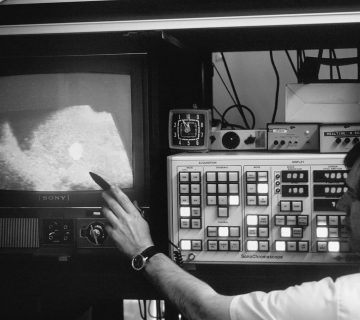Up to one-third of women experience irregular menstrual bleeding during their life. If you’re one of those women and considering uterine fibroid embolization, understanding what to expect during the procedure is critical. Uterine fibroid embolization (UFE) is a minimally invasive procedure used to treat symptoms of uterine fibroids, such as abnormal uterine bleeding and pelvic pain. Let’s take a closer look at what this procedure involves:
Read more: What to Expect With a Uterine Fibroid EmbolizationWhat Are Uterine Fibroids?
Noncancerous growths that form in the uterus are known are uterine fibroids. These fibroids can cause symptoms like pelvic pain, anemia, heavy periods, and pressure on the rectum or bladder.
Uterine fibroids are very common in women. In fact, one in every five women will have uterine fibroids at some point during her life. Usually, they can be treated with medications or surgery, but uterine fibroid embolization may be the best option for some women.
When Is Uterine Fibroid Embolization Recommended?
UFE procedure is usually recommended to women dealing with fibroids who want to avoid invasive surgeries such as hysterectomies. This procedure is especially beneficial for individuals with only a few uterine fibroids. It leaves the uterus intact, so doctors usually recommend this to women who want to get pregnant.
However, with fibroids, getting pregnant might become challenging, so you must discuss all your options with your interventional radiologist at the time of initial consultation.
How Does UFE Work?
UFE aims to cut off the blood flow to the uterine fibroids, so they shrink over time. During the procedure, an interventional radiologist uses ultrasound imaging and X-rays imaging to guide a thin tube called a catheter through a tiny incision in your groin area into one of your arteries. Tiny particles are then injected through the catheter into your uterus to block blood flow to the uterine fibroids. This causes the uterine fibroids to shrink without damaging nearby organs or tissue.
The entire UFE procedure typically takes less than one hour, and patients usually go home the same day with minimal recovery time required afterward.
What Should I Expect After UFE?
Most women experience cramping after their UFE procedure, which is normal and should subside within 1-2 days after the treatment. Pain medications can help ease any discomfort or pain if needed.
Your doctor will also suggest you avoid strenuous activities for several weeks afterward, as your body will need time to heal from the procedure. Be sure to schedule a follow-up visit two weeks after the UFE procedure. Discuss any other post-procedure instructions with the doctor during this visit.

At RJIR Vascular & Oncology, we ensure to improve our patients’ health and well-being by using effective interventional radiology approaches. We offer uterine fibroid embolization and fallopian tube recanalization to help our patients overcome uterus-related challenges.
In addition to UFE, we also offer treatment for enlarged prostate, knee pain, leg cramps, varicose veins, and more.
Schedule a consultation with us today.




No comment